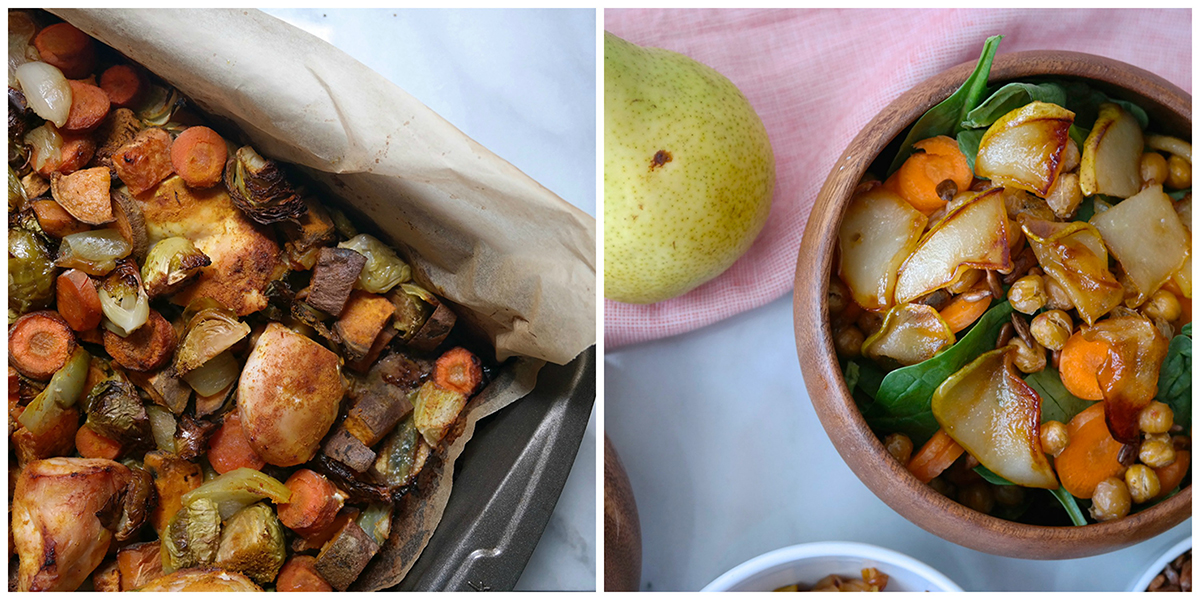Five Easy Ways to Add Some Spring to Your Diet—When It Still Feels Like Winter

Photos by Emily McLaughlin
By this point, most of us would kill to finally, finally shed our puffer jackets and forget all about snow and ice. The problem? New England, as usual, hasn’t gotten the memo about springtime.
Everlasting winter also affects our diets, says registered dietitian Julie Starr. “Most of us have had enough of eating winter comfort food,” Starr says. “We may want to be eating sugar snap peas and baby lettuces—just as we want to be wearing our awesome light jean coat—but we can’t right now.”
What you can do, however, is subtly tweak your meals to survive the winter-to-spring transition period. Starr has five tips:
1. Add texture.
After months and months of roasted root vegetables, your palate is likely crying out for something different. Starr recommends adding a touch of raw produce to your cooked meals—fresh carrots grated over your carrot soup, for example—to put you in a springtime state of mind.
2. Embrace fruits.
A touch of fruit perks up even quintessentially winter dishes. Add lemon to your roasted chicken, or toss some orange slices in with your Brussels sprouts, Starr suggests. Adding some acidity to your cooking with lemon juice, white wine, or vinegar can achieve a similar effect.
3. Learn to blanch.
Blanching vegetables—boiling them for a short time, then submerging them in ice water—preserves their texture and flavor, while cooking them just enough. “It just brightens up the veggies, it helps with the digestive system, and it keeps the flavor of the veggies,” Starr says. “It’s as if you’re having a raw salad, but there’s a little bit of warmth to it. It’s kind of like an in-between.”
4. Copy the French.
Fines herbes—a blend of parsley, tarragon, chervil, and chives often used in classic French cooking—can do wonders for your plate, Starr says. “Sprinkle it on fish, sprinkle it on chicken, sprinkle it on your roasted vegetables, and the flavor of the herbs and the freshness of it will help,” she says. Bonus points if you grow your own herbs at home.
5. Eat the rainbow.
Eating foods in a wide variety of colors is always a solid tip, as it helps ensure you’re getting plenty of different vitamins and minerals. But in these cold, gray days, it can also do wonders for your mental health. “When you think about spring fashion, everyone is showing color,” Starr says. “It’s the same thing with food. Eat your rainbow.”
Put Starr’s tips to the test with her recipe for apple cabbage slaw:
Ingredients
Serves 4
- ¼ cup olive oil
- 1 tsp Dijon mustard
- 1 Tbsp lemon juice
- 1 Tbsp honey
- 2 cups cored and shredded red cabbage
- 2 medium granny smith apples (or other tart, crisp apples), cored and shredded
- 8 radishes, chopped
- 1 red onion
- salt and pepper
- ½ cup chopped fresh parsley
Directions:
Whisk oil, mustard, lemon juice, and honey in a large bowl until combined.
Add the cabbage, apples, radishes, and onion and toss until thoroughly combined. Sprinkle with salt and pepper and chill until ready to eat. (Try to let the slaw rest about an hour, so that the flavors can marry. You can let it sit longer, up to a few hours, before the apples will discolor. Just drain the slaw before continuing.)
Just before serving, toss with parsley.


